|
(For Immediate Release) NWT – April 12, 2021
Since it was founded in 2015, the Collaborative has distributed more than four and a half million dollars to 270 projects in every region of the NWT. These projects have made numerous meaningful impacts, including but not limited to:
“Through the funding and continued support of the NWT On The Land Collaborative, we have been able to provide over 100 campers and staff with a certified guide during the 2020 camp season. We were grateful that our long time canoe guide was able to return for another season. The canoe guide knows the area and the campers very well and through the NWT On The Land Collaborative we were able to once again head out on to the water in a safe and enjoyable manner with our guide leading the way” says Zain Ali, Director of Camp Connections, a program of the Foster Coalition of the NWT that brings youth who have been in contact with social services an opportunity to spend time on the land. 2021 grants range between $3,700 and $40,000. The recipients are primarily Indigenous governments, schools, and non-governmental organizations. Small grant recipients include the winter camping excursion for students at Chief Paul Niditchie School in Tsiigehtchic, and youth and Elder rabbit snaring hosted by Setsi’e Frederick Daycare in Hay River. Medium-sized grants will allow NWT Métis Nation to host an on the land community culture camp, and make it possible for Mangilaluk School in Tuktuuyaqtuuq/Tuktoyaktuk to bring students dog sledding near the pingos. Large grants have been awarded to the Sahtú Renewable Resources Board for the Sahtú Youth Network canoe trip, and to support Dehcho First Nation’s community camp in the Edzéhzı́e Protected Area. In addition to financial support, funded projects may also receive equipment, training, and program support. Quick Facts
Media Contact
Steve Ellis Program Lead, Northern Canada MakeWay Email: steve.ellis@makeway.org Phone: 867.988.1963 Rachel Cluderay On the Land Programs Consultant NWT Recreation and Parks Association Email: rcluderay@nwtrpa.org Phone: 867.669.8392
1 Comment
Beginning Steps |
| During these youth-led events, that electric energy was pulsating. Conversations about creating a platform to give this energy a direction, longevity, and sustainability quickly became the goals. The importance of creating an initiative became evident. This led us to join MakeWay’s Charitable Society Shared Platform, a platform that has supported other amazing and innovative Northern and Indigenous-led initiatives such as Western Arctic Youth Collective. Next, WAYC formed a steering committee of youth who are based in and connected to the Western Arctic. The steering committee’s role is necessary to continue guiding the direction and growth of the work of WAYC as we realize that not any one of us could be the sum of Western Arctic youth experiences. The steering committee listens to what youth voices are saying, and guides how we could move forward collectively to best support our community. | |
During that time I took a step back from land-based work, but I continued to stay connected with others involved in this type of work. After I left, the momentum didn’t stop. There is now a steering committee created; made up of community members of the Western Arctic in late 2020. I am excited to see how the Collective grows.
Moving Forward...
Wade Vaneltsi
| I became a member of the WAYC steering committee in October 2020. So far I’ve participated in an on the land steering committee retreat outside of Inuuvik/Inuvik to get well-acquainted with the rest of the committee members, faculty, and facilitators; as well as to contribute meaningfully in guiding the visions and potentials of WAYC forward. During the first couple days of the retreat, the topics we discussed while brainstorming what would become our guiding principles made me reminisce of the days when I attended university for my certification of Indigenous Self-Determination in Theory and in Practice. By having these discussions at the on the land retreat, it definitely brought back this energy of resurgence and self-determination, which really fuelled the drive for the overall conversations throughout every topic during the retreat. I have a lot of hope for WAYC’s future, especially seeing how far we’ve come since being formed. |
The land is what brings all the ideas together and upholds the conversation. I feel the land informs WAYC because of how everything on the land, plant or animal, has a lesson for us to learn and wisdom to pass on. I feel that everything is connected in a spiritual way and there was a relationship built on a reciprocity of love in the past that we need to reestablish with these vessels of the land, whether it be a plant or animal. Being able to be open about what you want to see happen, as well as the Collective’s dedication and passion to making that opportunity a reality for other youth in the Western Arctic, is very admirable in all aspects.
It feels that with all the different on the land programs that we’ve discussed at WAYC, I can foresee how these ideas promote community-based actions that shift the ways of learning and thinking among youth, specifically for those youth who are willing to try land skills that are closer to home and something they’ve always wanted to learn.
At the steering committee retreat, we identified our guiding values to be mental wellness, education, cultural values and knowledge, community empowerment, and collective mentorship. With the guiding principles we have established, I see WAYC employing Indigenous worldviews, orientating knowledge creation opportunities for our youth and their communities, and living our responsibilities as the future leaders of our communities as directed almost exclusively towards our community and nation.
At the steering committee retreat, we identified our guiding values to be mental wellness, education, cultural values and knowledge, community empowerment, and collective mentorship. With the guiding principles we have established, I see WAYC employing Indigenous worldviews, orientating knowledge creation opportunities for our youth and their communities, and living our responsibilities as the future leaders of our communities as directed almost exclusively towards our community and nation.
One of the best things about WAYC’s on the land programs is the loving involvement of Elders. Each Elder passes down teachings differently and their wisdom comes in many ways, such as, oral teachings, storytelling, songs, dreams, reflections, sharing, observations, and most importantly, modelling all the teachings that were passed down to them when they were young. There’s something so wholesome about the way Indigenous knowledge and practices are passed on to each generation. Self-determination is what’s needed for us to go about with achieving the goals we have set out for the steering committee. Our purpose is to empower our northern youth to be change makers by providing a platform of youth-led collaborative initiatives and partnerships in their communities, and to partner with other like-minded groups in the North.
| | |
As for myself, I know in my heart that self-determination means I can make a change for myself, my family, my community, and my nation in a positive way by learning my Gwich’in values, cultures, protocols, and beliefs. So, let us bring our ancestors with us on our journey to making a positive change for our nation. In the end, it is the youth that we are here for. To set an example that will echo in their futures and in their communities, it is up to each and every one of us to recognize, practice, and value Indigenous resurgence while understanding what the risks and responsibilities of this recognition means to our people.
- Wade Vaneltsi
The Western Arctic Youth Collective is a grant recipient of the NWT On The Land Collaborative. “WAYC strives to create opportunities to prepare and support ongoing development to improve the lives of youth ages 18-35 years old. The purpose of this collective is to empower youth to be changemakers by providing a platform of youth-led collaborative initiatives and partnerships in their communities.”(https://makeway.org/blog/shared-platform-project-spotlight-western-arctic-youth-collective/)
NWT On The Land Collaborative Hands Out One Million Dollars in Grants for the Third Year in a Row
11/18/2020
(For Immediate Release)
NWT – November 18, 2020
For the third year in a row, the NWT On The Land Collaborative distributed one million dollars in grants to 55 projects across the territory that connect NWT residents with land, culture, and community.
“I’ve been super happy to have people in communities tell me that the Collaborative has one of the best proposal processes in the NWT. A key objective of the Collaborative was to make on the land funding accessible, with as little red tape as possible, and I am proud to say I think we have accomplished this,” says MakeWay representative Steve Ellis, who is also one of the founding members of the Collaborative.
The outcomes of on the land programming are as numerous as they are varied, but one thing is certain: they support the health and wellbeing of communities, families, and individuals, and are vital to healthy ecosystems and economies in the North. Over the past five years, the Collaborative has distributed more than four million dollars to 243 projects in every region of the NWT.
“Northern Youth Leadership believes strongly in the power of land-based programming. Each year, we support youth to take on the challenge of their first canoe trip, hiking trip, or camping trip and see them build confidence, connections, and independence in the process. The continued support of the On the Land Collaborative is instrumental to our programming. We are so thankful to be able to work with a funder (the Collaborative) that understands both the challenges and the rewards of on the land programming,” says Emily Smith, Program Coordinator for Northern Youth Leadership, a territorial non-profit that brings youth together for land-based programming and NWT On The Land Collaborative grant recipient.
2020 grants range between $2,500 and $60,000. The recipients are primarily Indigenous governments, schools, and non-governmental organizations. Small grant recipients include students gathering traditional medicines with Elders hosted by Chief Albert Wright School in Tulít’a, and the rabbit snaring program for children at Setsi’e Frederick Daycare in Hay River. Medium-sized grants will allow Nihtat Gwich’in Council to continue their intergenerational revitalizing traditional skills project, and make it possible for Chief Jimmy Bruno School in Behchokǫ̀ to organize two rites of passage camps. Large grants have been awarded to the Inuvialuit Regional Corporation for a regional on the land literacy camp, and to support Dehcho First Nation’s Yundaa Gogha youth canoe trip. In addition to financial support, funded projects may also receive equipment, training, and program support.
Quick Facts
Media Contact
Steve Ellis
Program Lead, Northern Canada
MakeWay
Email: steve.ellis@makeway.org
Phone: 867.988.1963
Rachel Cluderay
On the Land Programs Consultant
NWT Recreation and Parks Association
Email: rcluderay@nwtrpa.org
Phone: 867.669.8392
NWT – November 18, 2020
For the third year in a row, the NWT On The Land Collaborative distributed one million dollars in grants to 55 projects across the territory that connect NWT residents with land, culture, and community.
“I’ve been super happy to have people in communities tell me that the Collaborative has one of the best proposal processes in the NWT. A key objective of the Collaborative was to make on the land funding accessible, with as little red tape as possible, and I am proud to say I think we have accomplished this,” says MakeWay representative Steve Ellis, who is also one of the founding members of the Collaborative.
The outcomes of on the land programming are as numerous as they are varied, but one thing is certain: they support the health and wellbeing of communities, families, and individuals, and are vital to healthy ecosystems and economies in the North. Over the past five years, the Collaborative has distributed more than four million dollars to 243 projects in every region of the NWT.
“Northern Youth Leadership believes strongly in the power of land-based programming. Each year, we support youth to take on the challenge of their first canoe trip, hiking trip, or camping trip and see them build confidence, connections, and independence in the process. The continued support of the On the Land Collaborative is instrumental to our programming. We are so thankful to be able to work with a funder (the Collaborative) that understands both the challenges and the rewards of on the land programming,” says Emily Smith, Program Coordinator for Northern Youth Leadership, a territorial non-profit that brings youth together for land-based programming and NWT On The Land Collaborative grant recipient.
2020 grants range between $2,500 and $60,000. The recipients are primarily Indigenous governments, schools, and non-governmental organizations. Small grant recipients include students gathering traditional medicines with Elders hosted by Chief Albert Wright School in Tulít’a, and the rabbit snaring program for children at Setsi’e Frederick Daycare in Hay River. Medium-sized grants will allow Nihtat Gwich’in Council to continue their intergenerational revitalizing traditional skills project, and make it possible for Chief Jimmy Bruno School in Behchokǫ̀ to organize two rites of passage camps. Large grants have been awarded to the Inuvialuit Regional Corporation for a regional on the land literacy camp, and to support Dehcho First Nation’s Yundaa Gogha youth canoe trip. In addition to financial support, funded projects may also receive equipment, training, and program support.
Quick Facts
- The NWT On The Land Collaborative was founded in 2015.
- The Collaborative is a collective of diverse organizations that supports land-based programs through funds, resources, and expertise. Current funding partners include the Government of the Northwest Territories’ Departments of Health and Social Services (HSS), Environment and Natural Resources (ENR), Education, Culture, and Employement (ECE), and Industry, Tourism, and Investment (ITI); MakeWay; NWT Recreation and Parks Association; Dominion Diamond Mines; Nature United; McConnell Foundation; Rio Tinto’s Diavik Diamond Mine; The Gordon Foundation; Royal Bank of Canada; and Full Circle Fund. Participating Indigenous governments include Inuvialuit Regional Corporation; Gwich’in Tribal Council; Tłı̨chǫ Government; Dehcho First Nations; NWT Métis Nation; Akaitcho Territory Government; and Sahtú Secretariat Inc.
- The Collaborative supports projects that: get people out on the land; connect community members to their land, culture, and traditions; build or strengthen partnerships; enhance community capacity; and promote sustainability.
- Our 2020 annual report is available here.
Media Contact
Steve Ellis
Program Lead, Northern Canada
MakeWay
Email: steve.ellis@makeway.org
Phone: 867.988.1963
Rachel Cluderay
On the Land Programs Consultant
NWT Recreation and Parks Association
Email: rcluderay@nwtrpa.org
Phone: 867.669.8392
NWT On The Land Collaborative Hands Out One Million Dollars in Grants for the Second Year in a Row
2/25/2019
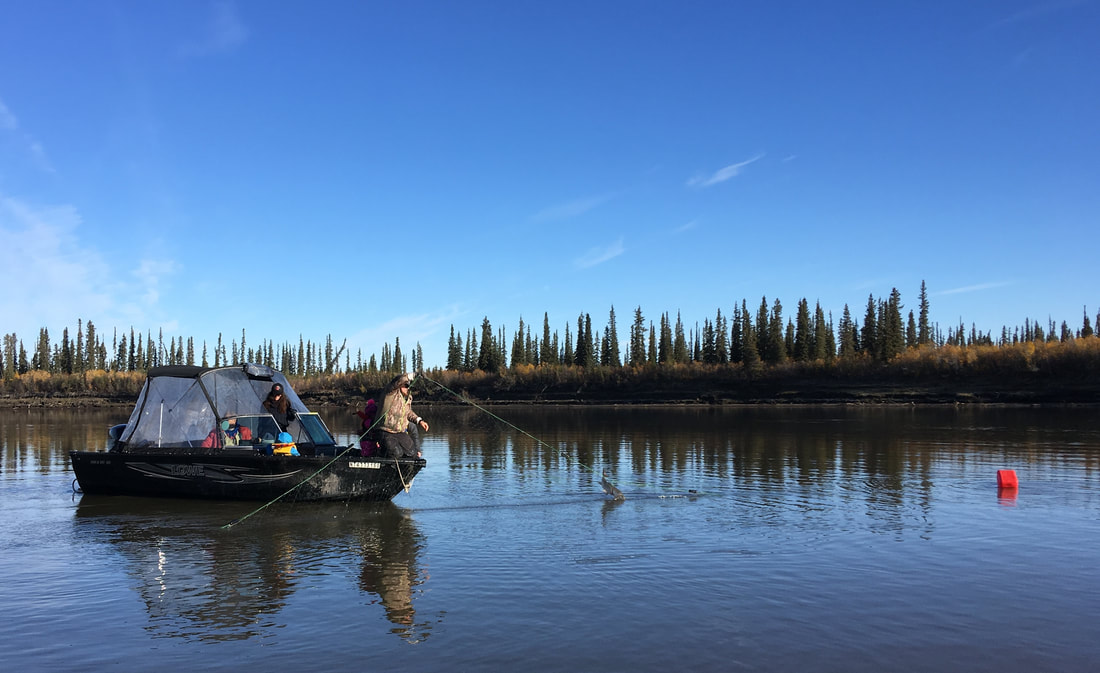
(For Immediate Release)
NWT – February 25, 2018
For the second year in a row, the NWT On The Land Collaborative will distribute 1 million dollars in grants to 48 projects across the territory that connect NWT residents with land, culture, and community.
“The continued success of the Collaborative is a testament to the Partners’ willingness and commitment to working together, and the dedication of communities and organizations to delivering programs that renew and strengthen relations to the land,” says Tides Canada representative Steve Ellis, who is also one of the founding members of the Collaborative.
The outcomes of on the land programming are as numerous as they are varied, but one thing is certain: they support the health and wellbeing of communities, families, and individuals, and are vital to healthy ecosystems and economies in the North. Since it was founded in 2015, the Collaborative has distributed more than 3 million dollars to 166 projects in every region of the NWT.
“Grants from the On The Land Collaborative have allowed the school to develop what has become an annual canoe trip on Tsııgèhnjık. This trip has reconnected the school and community with this historical waterway. While the grants provided the seed money, the school and community came together to ensure the youth understood the importance of their role as stewards of the river. As a school we are forever indebted to the Collaborative, without their funding this trip would have remained a wistful dream. It took the initial grant in 2016 to start the conversation,” says Sonia Gregory, principal of Chief Paul Niditchie School in Tsııgehtchıc.
2019 grants range between $2,500 and $60,000. The recipients are primarily Indigenous governments, schools, and non-governmental organizations. Small grant recipients include an ice fishing program hosted by the Tuktoyaktuk Elders Society and a winter camp for students at Jean Wetrade School in Gametì. Medium-sized grants will allow the Children First Society in Inuvik to continue to expand its First Steps on the Land Program and make it possible for the Ka’a’gee Tu First Nation to organize a canoe trip for youth and Elders. Large grants have been awarded to the Délı̨nę Got’ı̨nę Government to support the Tsá Tué Water Guardians Program and to Pehdzeh Kı First Nation for an immersive language camp at Fish Lake. In addition to financial support, funded projects may also receive equipment, training, and program support.
This past fall, the Collaborative was celebrated with a Premier’s Award for Collaboration for “effectively generating new ideas with practical applications” and “collaboration between the GNWT, NGOs, and Indigenous governments” that “recognizes, celebrates, and transmits traditional knowledge.”
Quick Facts
Contact
Steve Ellis
Program Lead, Northern Canada
Tides Canada
Email: steve.ellis@tidescanada.org
Phone: 867.988.1963
Jess Dunkin
Director, On the Land Programs
NWT Recreation and Parks Association
Email: jdunkin@nwtrpa.org
Phone: 867.669.8376
NWT – February 25, 2018
For the second year in a row, the NWT On The Land Collaborative will distribute 1 million dollars in grants to 48 projects across the territory that connect NWT residents with land, culture, and community.
“The continued success of the Collaborative is a testament to the Partners’ willingness and commitment to working together, and the dedication of communities and organizations to delivering programs that renew and strengthen relations to the land,” says Tides Canada representative Steve Ellis, who is also one of the founding members of the Collaborative.
The outcomes of on the land programming are as numerous as they are varied, but one thing is certain: they support the health and wellbeing of communities, families, and individuals, and are vital to healthy ecosystems and economies in the North. Since it was founded in 2015, the Collaborative has distributed more than 3 million dollars to 166 projects in every region of the NWT.
“Grants from the On The Land Collaborative have allowed the school to develop what has become an annual canoe trip on Tsııgèhnjık. This trip has reconnected the school and community with this historical waterway. While the grants provided the seed money, the school and community came together to ensure the youth understood the importance of their role as stewards of the river. As a school we are forever indebted to the Collaborative, without their funding this trip would have remained a wistful dream. It took the initial grant in 2016 to start the conversation,” says Sonia Gregory, principal of Chief Paul Niditchie School in Tsııgehtchıc.
2019 grants range between $2,500 and $60,000. The recipients are primarily Indigenous governments, schools, and non-governmental organizations. Small grant recipients include an ice fishing program hosted by the Tuktoyaktuk Elders Society and a winter camp for students at Jean Wetrade School in Gametì. Medium-sized grants will allow the Children First Society in Inuvik to continue to expand its First Steps on the Land Program and make it possible for the Ka’a’gee Tu First Nation to organize a canoe trip for youth and Elders. Large grants have been awarded to the Délı̨nę Got’ı̨nę Government to support the Tsá Tué Water Guardians Program and to Pehdzeh Kı First Nation for an immersive language camp at Fish Lake. In addition to financial support, funded projects may also receive equipment, training, and program support.
This past fall, the Collaborative was celebrated with a Premier’s Award for Collaboration for “effectively generating new ideas with practical applications” and “collaboration between the GNWT, NGOs, and Indigenous governments” that “recognizes, celebrates, and transmits traditional knowledge.”
Quick Facts
- The NWT On The Land Collaborative was founded in 2015.
- The Collaborative is a collective of diverse organizations that supports land-based programs through funds, resources, and expertise. Current funding partners include the Government of the Northwest Territories’ Departments of Health and Social Services (HSS), Environment and Natural Resources (ENR), and Industry, Tourism, and Investment (ITI); Tides Canada; NWT Recreation and Parks Association; Dominion Diamond Mines; Nature United; McConnell Foundation; Rio Tinto’s Diavik Diamond Mine; Indigenous Services Canada; and The Gordon Foundation. Participating Indigenous governments include Inuvialuit Regional Corporation; Gwıch’ın Tribal Council; Tłı̨chǫ Government; Dehcho First Nations; NWT Métis Nation; and Akaitcho Territory Government.
- The Collaborative supports projects that: get people out on the land; connect community members to their land, culture, and traditions; build or strengthen partnerships; enhance community capacity; and promote sustainability.
- A full list of the 2019 grant recipients is available here.
Contact
Steve Ellis
Program Lead, Northern Canada
Tides Canada
Email: steve.ellis@tidescanada.org
Phone: 867.988.1963
Jess Dunkin
Director, On the Land Programs
NWT Recreation and Parks Association
Email: jdunkin@nwtrpa.org
Phone: 867.669.8376
The NWT On The Land Collaborative was honoured to have been named as a recipient of a 2018 Premier's Award for Collaboration. Since its inception in 2015, the Collaborative has distributed over 2 million dollars in grants to 118 on the land projects across the NWT.
The citation read, "This team has effectively generated new ideas with practical applications through the OTL program, which recognizes, celebrates, and transmits traditional knowledge supported through collaboration between the GNWT, NGOS, and Indigenous governments."
On hand to receive the award from Premier Bob McLeod at the ceremony on November 29, 2018, were (left to right): Winter Bailey (Rio Tinto Diavik Diamond Mine), Susan Ross (Gwıch’ın Tribal Council), Kyla Kakfwi Scott (GNWT, Health and Social Services), Misty Ireland (Dehcho First Nations), Rebecca Plotner (Dominion Diamond Mines), and Sarah Dennis (GNWT, Environment and Natural Resources). The others partners named in the citation were Stephen Ellis (Tides Canada), Jess Dunkin (NWT Recreation and Parks Association), John B. Zoe (Tłı̨chǫ Government), and Meghan Etter (Inuvilauit Regional Corporation).
Máhsı to Angela Gzowski for the lovely photos from the event and congratulations to the other recipients!
The citation read, "This team has effectively generated new ideas with practical applications through the OTL program, which recognizes, celebrates, and transmits traditional knowledge supported through collaboration between the GNWT, NGOS, and Indigenous governments."
On hand to receive the award from Premier Bob McLeod at the ceremony on November 29, 2018, were (left to right): Winter Bailey (Rio Tinto Diavik Diamond Mine), Susan Ross (Gwıch’ın Tribal Council), Kyla Kakfwi Scott (GNWT, Health and Social Services), Misty Ireland (Dehcho First Nations), Rebecca Plotner (Dominion Diamond Mines), and Sarah Dennis (GNWT, Environment and Natural Resources). The others partners named in the citation were Stephen Ellis (Tides Canada), Jess Dunkin (NWT Recreation and Parks Association), John B. Zoe (Tłı̨chǫ Government), and Meghan Etter (Inuvilauit Regional Corporation).
Máhsı to Angela Gzowski for the lovely photos from the event and congratulations to the other recipients!
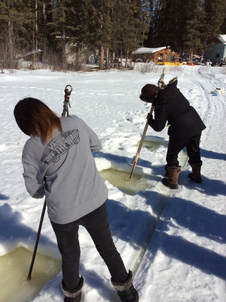
This year, the NWT On The Land Collaborative will distribute $1 million dollars in grants to 48 projects across the territory that connect NWT residents with their land, culture, and community.
“Four years ago when the Collaborative was just an idea, I never imagined in such a short time we’d have a million dollars in the bank to put towards programming,” remarks Meghan Etter, the Community Advisor for the Inuvialuit Settlement Region. Community Advisors are appointed by Indigenous governments in each region to serve as representatives for the Collaborative. They provide on-the-ground support to projects throughout the process, while also assisting in the selection of recipients and in providing strategic direction to the Collaborative.
The outcomes of on the land programming are as numerous as they are varied, but one thing is certain: they support the health and wellbeing of communities, families, and individuals, and are vital to healthy ecosystems and economies in the North.
This is the third year the Collaborative has been administering grants to land-based initiatives in the NWT. In year one, the Collaborative gave out $381,850 to 35 projects. Last year, the pot of $634,845 was spread across 35 projects. The average grant amount continues to grow from almost $11,000 in 2016 to just over $18,000 in 2017 to almost $21,000 per project this year. This year also marks an increase in the number of projects receiving full funding. More than half of the successful applicants were fully funded. This is an important marker of success for the Collaborative, which is dedicated to making it easier and less time consuming for organizations and communities to access funds for land-based programs.
As in previous years, there is a wide range of grant amounts and project types. Small grant recipients include an ice fishing program in Whatì and a land- and culture-based retreat for LGBTQ+ students and their allies in the South Slave. Medium-sized grants will allow the Ulukhaktok Community Corporation to run a summer Inuinnaqtun camp for young people in their community and Chief Julius School in Teetł’it Zheh to immerse students in traditional Gwich’in culture while travelling on Teetł’it Gwinjik (Peel River). Large grants have been awarded to the Dehcho K’ehodi Stewardship & Guardian Program and the Tulít’a Dene Band to bring elders and youth together for a walking journey along traditional Shúhtagot’ine trails.
In addition to financial support, funded projects may also receive access to equipment, training, and program support.
Quick Facts
Contact
Steve Ellis
Program Lead, Northern Canada
Tides Canada
Email: steve.ellis@tidescanada.org
Phone: 867.988.1963
Jess Dunkin
Director, On the Land Programs
NWT Recreation and Parks Association
Email: jdunkin@nwtrpa.org
Phone: 867.669.8376
“Four years ago when the Collaborative was just an idea, I never imagined in such a short time we’d have a million dollars in the bank to put towards programming,” remarks Meghan Etter, the Community Advisor for the Inuvialuit Settlement Region. Community Advisors are appointed by Indigenous governments in each region to serve as representatives for the Collaborative. They provide on-the-ground support to projects throughout the process, while also assisting in the selection of recipients and in providing strategic direction to the Collaborative.
The outcomes of on the land programming are as numerous as they are varied, but one thing is certain: they support the health and wellbeing of communities, families, and individuals, and are vital to healthy ecosystems and economies in the North.
This is the third year the Collaborative has been administering grants to land-based initiatives in the NWT. In year one, the Collaborative gave out $381,850 to 35 projects. Last year, the pot of $634,845 was spread across 35 projects. The average grant amount continues to grow from almost $11,000 in 2016 to just over $18,000 in 2017 to almost $21,000 per project this year. This year also marks an increase in the number of projects receiving full funding. More than half of the successful applicants were fully funded. This is an important marker of success for the Collaborative, which is dedicated to making it easier and less time consuming for organizations and communities to access funds for land-based programs.
As in previous years, there is a wide range of grant amounts and project types. Small grant recipients include an ice fishing program in Whatì and a land- and culture-based retreat for LGBTQ+ students and their allies in the South Slave. Medium-sized grants will allow the Ulukhaktok Community Corporation to run a summer Inuinnaqtun camp for young people in their community and Chief Julius School in Teetł’it Zheh to immerse students in traditional Gwich’in culture while travelling on Teetł’it Gwinjik (Peel River). Large grants have been awarded to the Dehcho K’ehodi Stewardship & Guardian Program and the Tulít’a Dene Band to bring elders and youth together for a walking journey along traditional Shúhtagot’ine trails.
In addition to financial support, funded projects may also receive access to equipment, training, and program support.
Quick Facts
- The NWT On The Land Collaborative was founded in 2015.
- The Collaborative is a collective of diverse organizations that supports land-based programs through funds, resources, and expertise. Current funding partners include the Government of the Northwest Territories' Departments of Health and Social Services and Environment and Natural Resources (ENR); Tides Canada; Dominion Diamond Corporation; NWT Recreation and Parks Association; TNC Canada; Indigenous Leadership Initiative; The J.W. McConnell Family Foundation; Diavik Diamond Mine; Indigenous Services Canada; and The Gordon Foundation. Participating Indigenous governments include Inuvialuit Regional Corporation; Gwich’in Tribal Council; Tłįchǫ Government; Dehcho First Nations; NWT Métis Nation; and Akaitcho Territory Government.
- The Collaborative supports projects that: get people out on the land; connect community members to their land, culture, and traditions; build or strengthen partnerships; enhance community capacity; and promote sustainability.
- The Collaborative welcomes two new funding partners in 2018: Government of the Northwest Territories’ Departments of Education, Culture, and Employment (ECE), and Industry, Tourism, and Investment (ITI).
Contact
Steve Ellis
Program Lead, Northern Canada
Tides Canada
Email: steve.ellis@tidescanada.org
Phone: 867.988.1963
Jess Dunkin
Director, On the Land Programs
NWT Recreation and Parks Association
Email: jdunkin@nwtrpa.org
Phone: 867.669.8376
Partner Profile: Jackie Siegel and Angela Young, Indigenous Languages and Education Secretariat
2/23/2018

The NWT On The Land Collaborative is a collective of partners from government, industry, philanthropy, and beyond, working together to support land-based programs and projects in the NWT. Each of these partner organizations has a representative that participates in quarterly meetings and annual funding decisions. This is the thirteenth in a series of profiles of the people and organizations that make the Collaborative possible. You can read the other profiles here.
Angela Young and Jackie Siegel are roommates, colleagues in the Indigenous Languages and Education Secretariat, and, now, co-representatives for the Secretariat on the NWT On The Land Collaborative (though they assured me that they don’t actually spend that much time together). The two even share a job title, Co-ordinator, although they have different backgrounds and responsibilities within the division. Angela, a “recovering teacher,” supports the delivery of Indigenous culture and language programming in schools through curriculum development and training; Jackie, who has a background in public health, supports monitoring and evaluation initiatives.
Both Jackie and Angela are relatively new to Yellowknife. Jackie was drawn north from his hometown of Vancouver by a job with the Department of Education, Culture, and Employment (ECE). He only intended to stay a year. Three years later, he is still here with no intention of leaving. If you’ve attended any events organized by NWT Pride, then you’ve likely crossed paths with Jackie. He served as the organization’s President for two years. As with many new arrivals to the North, Jackie has expanded his repertoire of outdoor activities since relocating to Yellowknife: “I picked up canoeing since moving here. I’ve given up car camping for canoe camping, which has been exciting!” His goal for this winter is put his new cross country skis to use.
Angela, who also hails from British Columbia, moved to Yellowknife in 2015 after 13 years in Inuvik. For a decade, she was an English teacher at Samuel Hearne/East Three Secondary. She also spent two years working as the Literacy Coordinator for the Beaufort Delta Educational Council. Leaving the Delta was bittersweet. In addition to the relationships she developed with students and community members while in Inuvik, Angela formed a strong bond with the land through time spent at camps throughout the Delta. Ultimately, it was the vision and purpose of the Assistant Deputy Minister for Education and Culture that drew her to Yellowknife. For Rita Mueller, work at ECE headquarters is another way of serving and supporting the territory’s schools, students, and communities. One of the things she loves about her new community are the many wonderful yoga studios and instructors.
Angela and Jackie’s worlds collided in 2015 with the creation of the Indigenous Languages and Education Secretariat (at that time known as the Aboriginal Languages Secretariat). ILES (pronounced “isles”) is tasked with “support[ing] the preservation, promotion, and revitalization of Indigenous languages throughout the NWT.” It is a misconception that the Secretariat, which is housed in ECE, is primarily concerned with supporting language learning in schools. To the contrary, almost half of ILES funding is funnelled through Indigenous governments and non-profits to support grassroots language initiatives.
Increasingly, Indigenous language education programs are taking place on the land, a reflection, Angela observes, of the deep connections between Indigenous languages and the land: “Most Indigenous people would say that the language comes from the land, so language teachers, language champions, and Elders always advocate for learning on the land. An immersion camp is the gold standard for a language experience.”
Members of the Secretariat have been following the Collaborative since it was created in 2015. Existing funding arrangements, however, prevented the division’s participation. A newly minted agreement with the federal Department of Heritage has changed this; as of fall 2017, ILES is officially a funding partner of the NWT On The Land Collaborative.
For the Secretariat, the Collaborative, while still relatively new, is attractive because it “has a system in place.” By taking advantage of this existing structure, ILES is able to ensure that a greater percentage of their funds are directed towards programming rather than administration. Of particular value are the Community Advisors, who, in addition to being an invaluable support for prospective applicants, are the eyes and ears of the Collaborative in their regions. As Angela notes, “The Community Advisors are a unique and invaluable aspect of the Collaborative, offering funding partners a window onto the programs and activities that are happening in their region.”
Equally attractive to ILES are the relationships that the Collaborative has built and strengthened over the last three years with a diverse collection of organizations and programs across the territory. Not only will tapping into this network give the Secretariat a better understanding of the language revitalization components of land-based programming, but it will also allow ILES to extend their reach and diversify the recipients of their support.
The Collaborative, for its part, is happy to have representatives from Education, Culture, and Employment at the table, especially given the number of applications received over the last two years from schools. In 2016, the Collaborative applications were submitted by 38 of the territory’s 49 schools. This year, almost a third of the grant requests came from educational institutions.
The Collaborative and grant recipients will benefit from the expertise that Jackie, Angela, and their colleagues bring to the table. Successful grant recipients will have access to ILES staff, including linguists, evaluators, and curriculum specialists. With the participation of the Secretariat in the Collaborative, more land-based projects with language revitalization as a primary focus will be supported. Jackie and Angela are also hopeful that the involvement of ILES will encourage more programs to make language revitalization a core component of their activities.
The NWT On The Land Collaborative depends on partners like the Indigenous Languages and Education Secretariat (ILES) to support land-based initiatives in the NWT. If your organization is interested in becoming a partner, please contact Steve Ellis (steve.ellis@tidescanada.org).
Angela Young and Jackie Siegel are roommates, colleagues in the Indigenous Languages and Education Secretariat, and, now, co-representatives for the Secretariat on the NWT On The Land Collaborative (though they assured me that they don’t actually spend that much time together). The two even share a job title, Co-ordinator, although they have different backgrounds and responsibilities within the division. Angela, a “recovering teacher,” supports the delivery of Indigenous culture and language programming in schools through curriculum development and training; Jackie, who has a background in public health, supports monitoring and evaluation initiatives.
Both Jackie and Angela are relatively new to Yellowknife. Jackie was drawn north from his hometown of Vancouver by a job with the Department of Education, Culture, and Employment (ECE). He only intended to stay a year. Three years later, he is still here with no intention of leaving. If you’ve attended any events organized by NWT Pride, then you’ve likely crossed paths with Jackie. He served as the organization’s President for two years. As with many new arrivals to the North, Jackie has expanded his repertoire of outdoor activities since relocating to Yellowknife: “I picked up canoeing since moving here. I’ve given up car camping for canoe camping, which has been exciting!” His goal for this winter is put his new cross country skis to use.
Angela, who also hails from British Columbia, moved to Yellowknife in 2015 after 13 years in Inuvik. For a decade, she was an English teacher at Samuel Hearne/East Three Secondary. She also spent two years working as the Literacy Coordinator for the Beaufort Delta Educational Council. Leaving the Delta was bittersweet. In addition to the relationships she developed with students and community members while in Inuvik, Angela formed a strong bond with the land through time spent at camps throughout the Delta. Ultimately, it was the vision and purpose of the Assistant Deputy Minister for Education and Culture that drew her to Yellowknife. For Rita Mueller, work at ECE headquarters is another way of serving and supporting the territory’s schools, students, and communities. One of the things she loves about her new community are the many wonderful yoga studios and instructors.
Angela and Jackie’s worlds collided in 2015 with the creation of the Indigenous Languages and Education Secretariat (at that time known as the Aboriginal Languages Secretariat). ILES (pronounced “isles”) is tasked with “support[ing] the preservation, promotion, and revitalization of Indigenous languages throughout the NWT.” It is a misconception that the Secretariat, which is housed in ECE, is primarily concerned with supporting language learning in schools. To the contrary, almost half of ILES funding is funnelled through Indigenous governments and non-profits to support grassroots language initiatives.
Increasingly, Indigenous language education programs are taking place on the land, a reflection, Angela observes, of the deep connections between Indigenous languages and the land: “Most Indigenous people would say that the language comes from the land, so language teachers, language champions, and Elders always advocate for learning on the land. An immersion camp is the gold standard for a language experience.”
Members of the Secretariat have been following the Collaborative since it was created in 2015. Existing funding arrangements, however, prevented the division’s participation. A newly minted agreement with the federal Department of Heritage has changed this; as of fall 2017, ILES is officially a funding partner of the NWT On The Land Collaborative.
For the Secretariat, the Collaborative, while still relatively new, is attractive because it “has a system in place.” By taking advantage of this existing structure, ILES is able to ensure that a greater percentage of their funds are directed towards programming rather than administration. Of particular value are the Community Advisors, who, in addition to being an invaluable support for prospective applicants, are the eyes and ears of the Collaborative in their regions. As Angela notes, “The Community Advisors are a unique and invaluable aspect of the Collaborative, offering funding partners a window onto the programs and activities that are happening in their region.”
Equally attractive to ILES are the relationships that the Collaborative has built and strengthened over the last three years with a diverse collection of organizations and programs across the territory. Not only will tapping into this network give the Secretariat a better understanding of the language revitalization components of land-based programming, but it will also allow ILES to extend their reach and diversify the recipients of their support.
The Collaborative, for its part, is happy to have representatives from Education, Culture, and Employment at the table, especially given the number of applications received over the last two years from schools. In 2016, the Collaborative applications were submitted by 38 of the territory’s 49 schools. This year, almost a third of the grant requests came from educational institutions.
The Collaborative and grant recipients will benefit from the expertise that Jackie, Angela, and their colleagues bring to the table. Successful grant recipients will have access to ILES staff, including linguists, evaluators, and curriculum specialists. With the participation of the Secretariat in the Collaborative, more land-based projects with language revitalization as a primary focus will be supported. Jackie and Angela are also hopeful that the involvement of ILES will encourage more programs to make language revitalization a core component of their activities.
The NWT On The Land Collaborative depends on partners like the Indigenous Languages and Education Secretariat (ILES) to support land-based initiatives in the NWT. If your organization is interested in becoming a partner, please contact Steve Ellis (steve.ellis@tidescanada.org).
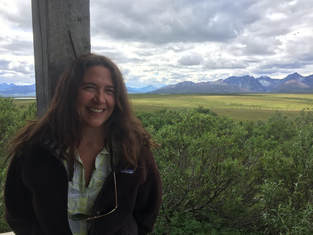
The NWT On The Land Collaborative is a collective of partners from government, industry, philanthropy, and beyond, working together to support land-based programs and projects in the NWT. Each of these partner organizations has a representative that participates in quarterly meetings and annual funding decisions. This is the twelfth in a series of profiles of the people and organizations that make the Collaborative possible. You can read the other profiles here.
Tracey Williams arrived to our meeting with a flat square mason jar labelled, “Yellowknife Homegrown Herbal.” “A little goes a long way,” she remarked about the tea, with a smile and her signature laugh. It is just like Tracey to share a little something from her garden. Anyone who has spent time with the animated expat knows she is passionate about food and food security, but especially food security in Indigenous communities. Food, she believes, “is a lifeline to the land, culture, and healing,” a means through which Indigenous communities can “regain what has been lost to the traumas of the colonization process.”
In addition to being an avid gardener and advocate, Tracey is the new face of TNC Canada in the territory; she was hired as the Northern Conservation Lead in late February. TNC Canada (not to be confused with the Nature Conservancy of Canada, which is a separate though kindred organization) is the Canadian affiliate of the world’s largest conservation organization, The Nature Conservancy. TNC Canada, as Tracey explains, is much more than a conservation organization, however: “We are interested in supporting sustainable communities, where people and nature are connected, and we are building the future around that connection.”
TNC Canada has had a presence in the North for almost a decade. Initially, the organization provided technical support to the NWT Protected Areas Strategy, a community-based approach to conservation planning aimed at creating a network of protected areas across the territory. Much of TNC Canada’s focus in the intervening years has centred on supporting Łutsël K’é Dene First Nation in the creation of the Thaidene Nëné National Park Reserve (Thaidene Nëné means “land of our ancestors” in Dënesųłiné). TNC Canada has also provided support to the community’s Ni Hat’ni Dene program. Ni Hati’ni, which means “watchers of the land,” is an Indigenous Guardian program modelled on the Haida Watchmen. Tracey’s task in the coming weeks and months will be to expand TNC Canada’s role in the territory.
TNC Canada has been involved with the Collaborative since the early days. Tracey’s predecessor attended the initial meetings in 2014 and TNC Canada was one of the first organizations to sign on as a funding partner. Like other partners, TNC Canada was attracted to the Collaborative because it meets an important need in the territory. As Tracey notes, “On the land programming, in all of the communities in the Northwest Territories, is something everyone wants to be doing. It’s something that everyone wants to be happening in their communities.” And so it made sense for TNC Canada to get involved with an initiative committed to removing barriers to spending time on the land.
TNC Canada’s support for land-based programming and their participation in the Collaborative was one of the things that drew Tracey to the organization: “Since moving to the NWT 15 years ago, everything I’ve done has had an on the land focus. That’s been my lens. I really like the fact that TNC Canada is not just supporting a land trust initiative, they want to support people, their place in nature, and their connection to the land.” Tracey believes strongly that on the land programs are “vital to defining a pathway to sustainability for the future of the Northwest Territories.”
Tracey, who hails from the Chicago area, first came north to paddle. (She and her partner, Steve, have at various points travelled the Back, Kazan, Coppermine, and Thelon Rivers.) It wasn’t long before Tracey made the move permanently, relocating from Sante Fe, New Mexico, where she had been working in land restoration and watershed management, to Łutsël K’é, where she took a job coordinating a traditional knowledge project on East Arm fisheries. In the ensuing twelve years, Tracey became an important part of the community fabric, involved in everything from the community garden and school board to environmental assessment interventions and community radio. In 2013, Tracey, Steve, and their three kids relocated to Yellowknife.
It was while living in Łutsël K’e that Tracey began her apprenticeship as a moosehide tanner under the tutelage of a trusted and respected local Elder, whom Tracey is now fortunate to call a friend: “I started out as her lackey. I was there to carry water or start fires or attend to the smokehouse, whatever needed to be done. Over time I realized I really liked hide tanning.” With the arrival of twins in 2011, Tracey’s time for tanning dramatically decreased. She makes a point, however, of returning to Łutsël K’é every June for a hide tanning camp to work on one of her in-progress hides. (Side note: the Łutsël K’é Women’s Group’s Annual Hide Tanning Camp is one of 35 grant recipients for 2017).
Other members of the Collaborative see the positive outcomes of land-based programming in terms of the wellbeing of participants or of the health of the land. Tracey brings a new perspective to the table: “Dene people, Inuit people, Indigenous people all have foodways.” Tracey recognizes the importance of those foodways to Indigenous identity, wellbeing, and sovereignty, hence why she thinks supporting the continuance of those foodways through the Collaborative is so important. As with other outcomes, food security doesn’t need to be an explicit objective of land-based programs to support Indigenous foodways and food sovereignty: “If you have an on the land project, inevitably, you will have a duck, a goose, a caribou head, a moose, a trout, whatever is in season, over the fire. You may go berry picking. In this way, on the land programming naturally supports food security regardless of whether or not we acknowledge it.”
The NWT On The Land Collaborative depends on partners like TNC Canada to support land-based initiatives in the NWT. If your organization is interested in becoming a partner, please contact Steve Ellis (steve.ellis@tidescanada.org).
Tracey Williams arrived to our meeting with a flat square mason jar labelled, “Yellowknife Homegrown Herbal.” “A little goes a long way,” she remarked about the tea, with a smile and her signature laugh. It is just like Tracey to share a little something from her garden. Anyone who has spent time with the animated expat knows she is passionate about food and food security, but especially food security in Indigenous communities. Food, she believes, “is a lifeline to the land, culture, and healing,” a means through which Indigenous communities can “regain what has been lost to the traumas of the colonization process.”
In addition to being an avid gardener and advocate, Tracey is the new face of TNC Canada in the territory; she was hired as the Northern Conservation Lead in late February. TNC Canada (not to be confused with the Nature Conservancy of Canada, which is a separate though kindred organization) is the Canadian affiliate of the world’s largest conservation organization, The Nature Conservancy. TNC Canada, as Tracey explains, is much more than a conservation organization, however: “We are interested in supporting sustainable communities, where people and nature are connected, and we are building the future around that connection.”
TNC Canada has had a presence in the North for almost a decade. Initially, the organization provided technical support to the NWT Protected Areas Strategy, a community-based approach to conservation planning aimed at creating a network of protected areas across the territory. Much of TNC Canada’s focus in the intervening years has centred on supporting Łutsël K’é Dene First Nation in the creation of the Thaidene Nëné National Park Reserve (Thaidene Nëné means “land of our ancestors” in Dënesųłiné). TNC Canada has also provided support to the community’s Ni Hat’ni Dene program. Ni Hati’ni, which means “watchers of the land,” is an Indigenous Guardian program modelled on the Haida Watchmen. Tracey’s task in the coming weeks and months will be to expand TNC Canada’s role in the territory.
TNC Canada has been involved with the Collaborative since the early days. Tracey’s predecessor attended the initial meetings in 2014 and TNC Canada was one of the first organizations to sign on as a funding partner. Like other partners, TNC Canada was attracted to the Collaborative because it meets an important need in the territory. As Tracey notes, “On the land programming, in all of the communities in the Northwest Territories, is something everyone wants to be doing. It’s something that everyone wants to be happening in their communities.” And so it made sense for TNC Canada to get involved with an initiative committed to removing barriers to spending time on the land.
TNC Canada’s support for land-based programming and their participation in the Collaborative was one of the things that drew Tracey to the organization: “Since moving to the NWT 15 years ago, everything I’ve done has had an on the land focus. That’s been my lens. I really like the fact that TNC Canada is not just supporting a land trust initiative, they want to support people, their place in nature, and their connection to the land.” Tracey believes strongly that on the land programs are “vital to defining a pathway to sustainability for the future of the Northwest Territories.”
Tracey, who hails from the Chicago area, first came north to paddle. (She and her partner, Steve, have at various points travelled the Back, Kazan, Coppermine, and Thelon Rivers.) It wasn’t long before Tracey made the move permanently, relocating from Sante Fe, New Mexico, where she had been working in land restoration and watershed management, to Łutsël K’é, where she took a job coordinating a traditional knowledge project on East Arm fisheries. In the ensuing twelve years, Tracey became an important part of the community fabric, involved in everything from the community garden and school board to environmental assessment interventions and community radio. In 2013, Tracey, Steve, and their three kids relocated to Yellowknife.
It was while living in Łutsël K’e that Tracey began her apprenticeship as a moosehide tanner under the tutelage of a trusted and respected local Elder, whom Tracey is now fortunate to call a friend: “I started out as her lackey. I was there to carry water or start fires or attend to the smokehouse, whatever needed to be done. Over time I realized I really liked hide tanning.” With the arrival of twins in 2011, Tracey’s time for tanning dramatically decreased. She makes a point, however, of returning to Łutsël K’é every June for a hide tanning camp to work on one of her in-progress hides. (Side note: the Łutsël K’é Women’s Group’s Annual Hide Tanning Camp is one of 35 grant recipients for 2017).
Other members of the Collaborative see the positive outcomes of land-based programming in terms of the wellbeing of participants or of the health of the land. Tracey brings a new perspective to the table: “Dene people, Inuit people, Indigenous people all have foodways.” Tracey recognizes the importance of those foodways to Indigenous identity, wellbeing, and sovereignty, hence why she thinks supporting the continuance of those foodways through the Collaborative is so important. As with other outcomes, food security doesn’t need to be an explicit objective of land-based programs to support Indigenous foodways and food sovereignty: “If you have an on the land project, inevitably, you will have a duck, a goose, a caribou head, a moose, a trout, whatever is in season, over the fire. You may go berry picking. In this way, on the land programming naturally supports food security regardless of whether or not we acknowledge it.”
The NWT On The Land Collaborative depends on partners like TNC Canada to support land-based initiatives in the NWT. If your organization is interested in becoming a partner, please contact Steve Ellis (steve.ellis@tidescanada.org).

Today, the NWT On The Land Collaborative releases its second annual report. The 2017 Report shares highlights from the past year, including new partners, the first annual learning trip, and the creation of a community of practice for land-based programs with a mental health focus.
The NWT On The Land Collaborative was founded in fall 2015 to support programs that connect NWT residents with their land, culture, and community. Since that time, the Collaborative has provided 70 projects across the territory with over a million dollars in funds. Grant recipients also have access to equipment, training, expertise, and other resources.
The 2017 Report features seven successful land-based projects, one from each region, that received grants in 2016. These include the Reviving Trails project organized by the Dedats’eetsaa (Tłįchǫ Research and Training Institute); the Feeding Our Spirits project, an initiative of Trailcross; and East Three Secondary School’s Wood for Elders program.
The report also details the allocation of funds for 2017. This year, grants range from $3,000 to support a canoe trip for grade nine students in Fort Smith to $60,000 for healing and wellness camps for youth in Rádeyįlįkóé (Fort Good Hope). Other funded projects include Trails on the Land, a 10-day trip beginning in Tuktoyaktuk that will take youth and elders through the traditional hunting territory of their ancestors; a land-based youth mentorship project coordinated by the Deh Gah Gotine First Nation; a boating program for Tłįchǫ youth that teaches traditional knowledge and skills; and a hide tanning camp in Łutsel K’e.
Quick Facts
Contacts
Steve Ellis
Program Lead, Northern Canada
Tides Canada
Email: steve.ellis@tidescanada.org
Phone: 867.988.1963
Jess Dunkin
Director, On the Land Programs
NWT Recreation and Parks Association
Email: jdunkin@nwtrpa.org
Phone: 867.669.8376
The NWT On The Land Collaborative was founded in fall 2015 to support programs that connect NWT residents with their land, culture, and community. Since that time, the Collaborative has provided 70 projects across the territory with over a million dollars in funds. Grant recipients also have access to equipment, training, expertise, and other resources.
The 2017 Report features seven successful land-based projects, one from each region, that received grants in 2016. These include the Reviving Trails project organized by the Dedats’eetsaa (Tłįchǫ Research and Training Institute); the Feeding Our Spirits project, an initiative of Trailcross; and East Three Secondary School’s Wood for Elders program.
The report also details the allocation of funds for 2017. This year, grants range from $3,000 to support a canoe trip for grade nine students in Fort Smith to $60,000 for healing and wellness camps for youth in Rádeyįlįkóé (Fort Good Hope). Other funded projects include Trails on the Land, a 10-day trip beginning in Tuktoyaktuk that will take youth and elders through the traditional hunting territory of their ancestors; a land-based youth mentorship project coordinated by the Deh Gah Gotine First Nation; a boating program for Tłįchǫ youth that teaches traditional knowledge and skills; and a hide tanning camp in Łutsel K’e.
Quick Facts
- The NWT On The Land Collaborative was founded in 2015.
- The Collaborative is a collective of diverse organizations that supports land-based programs through funds, resources, and expertise. Current funding partners include the Government of the Northwest Territories; Tides Canada; Dominion Diamond Corporation; NWT Recreation and Parks Association; TNC Canada; Indigenous Leadership Initiative; The J.W. McConnell Family Foundation; Diavik Diamond Mine; Health Canada; and The Gordon Foundation. Participating Indigenous governments include Inuvialuit Regional Corporation; Gwich’in Tribal Council; Tłįchǫ Government; Dehcho First Nations; NWT Métis Nation; and Akaitcho Territory Government.
- The Collaborative supports projects that: get people out on the land; connect community members to their land, culture, and traditions; build or strengthen partnerships; enhance community capacity; and promote sustainability.
Contacts
Steve Ellis
Program Lead, Northern Canada
Tides Canada
Email: steve.ellis@tidescanada.org
Phone: 867.988.1963
Jess Dunkin
Director, On the Land Programs
NWT Recreation and Parks Association
Email: jdunkin@nwtrpa.org
Phone: 867.669.8376
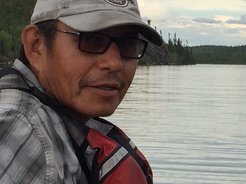
The NWT On The Land Collaborative is a collective of partners from government, industry, philanthropy, and beyond, working together to support land-based programs and projects in the NWT. Each of these partner organizations has a representative that participates in quarterly meetings and annual funding decisions. This is the eleventh in a series of profiles of the people and organizations that make the Collaborative possible. You can read the other profiles here.
John B. Zoe describes his current responsibilities as a Senior Advisor to the Tłı̨chǫ Ndek’àowo (Tłı̨chǫ Government) in this way: “I go to lend support to keep things moving. Sometimes people need to be reminded of their strengths and responsibilities.” John B. uses the same mentorship skills in his role as the Community Advisor for the Tłı̨chǫ region with the NWT On The Land Collaborative. Community Advisors are appointed by Indigenous governments in each region to serve as their representative to the Collaborative. They are available to applicants throughout the process, while also assisting in the annual selection of grant recipients.
As valuable as John B.’s mentorship skills are to the Collaborative are his experiences developing and supporting land-based programs in the Tłı̨chǫ. He has played a pivotal role in the creation and ongoing success of Wha Dǫ Ehtǫ K’è (Trails of Our Ancestors), an annual canoe trip that keeps Tłı̨chǫ history and culture alive by retracing traditional routes. In the early 1990s, John B. spent his summers travelling through Tłı̨chǫ territory with Elders, including the late Harry Simpson, and archaeologist Tom Andrews: “We were gathering stories, but there was no one to share them with. We didn’t see our own people travelling these rivers. So we began organizing canoe trips for youth so they could travel with the Elders and hear the stories.”
The first Trails trip ran in 1995. Over the course of 15 days, five 22-foot canoes paddled from John B.’s home community of Behchokǫ̀ to Gamètì, arriving in time for the Tłı̨chǫ Annual Gathering. This summer marks the 23rd anniversary of the program. In mid-July, flotillas of canoes from each of the four Tłı̨chǫ communities will set out for the Gathering, which is scheduled to take place in Behchokǫ̀. Wha Dǫ Ehtǫ K’è has not only continued, it has prospered, John B. shares: “Each year, we receive more applications than we have seats in the canoes!”
To understand the cultural importance of these canoe trips, you have to know something about the importance of stories for the Tłı̨chǫ. Stories contain knowledge about how to be Tłı̨chǫ and live in respectful relation to the land. Stories are not disembodied; they are tied to specific places. John B., borrowing from Elder Harry Simpson, likens the landscape to a book: “The pages are your travels.” To understand the book’s teachings, in other words, you need to be on the land, hearing the stories in the places that they belong. A recent history of Wha Dǫ Ehtǫ K’è captures it best: “By travelling traditional trails, which link places like beads on a string, Tłı̨chǫ youth are told stories as each place is visited.”
The Trails trips, like land-based programs more generally, are about looking back in order to move forward. By returning to older ways of doing things, in this case travelling by canoe in community and hearing the stories, the hope is that youth will be grounded in the Tłı̨chǫ way of life and able to chart a way forward for themselves as individuals and as a people. If Tłı̨chǫ youth are to “be strong like two people,” a vision first articulated by Chief Jimmy Bruneau, but which is best known in the words of Elizabeth Mackenzie, they need this education on the land alongside Elders and community leaders.
While participants experience the canoe trips in their own way as individuals, ultimately Wha Dǫ Ehtǫ K’è is about collective experience and collective knowledge. John B. explains it this way: “If somebody from this group of 100 canoeists learns something it will stay with them and when it’s time to fill the gap, they will fill that gap. The more people that have these bits and pieces of information, they become an army of knowledgeable people about our collective story.” It’s hard to ignore the parallels with the Collaborative and the value that each individual member through their knowledge and experiences brings to the collective.
While the Community Advisors share certain responsibilities, they all approach their role in different ways, depending on their personalities and the needs of their region. For John B., being a Community Advisor is about reminding Tłı̨chǫ people and communities of their strengths and abilities, not the least of which is the knowledge of the land, the animals, relationships, and governance: “Our communities have this knowledge, held by our professors and they seek to pass on this information.” Land-based programs that engage Elders are vital to this work of reviving the old ways and ensuring continued stability for the future.
More than once during our conversation, John B., in reference to the Tłı̨chǫ, noted, “Our work is to acknowledge what was there before and use it as a basis for application in a modern way.” One example of this meeting of old and new is the Reviving Trails Project, which seeks to revitalize ancient Tłı̨chǫ canoe routes. Most recently, an 18-person group, which included John B., travelled the Mowhi Trail by canoe from Behchokǫ̀ to the barrenlands and back to Wekweètì, plotting their route and important cultural places with GPS. Not only did the trip improve the conditions of the trails and result in a digital map of the route, making it easier for future travellers, but it also enabled the sharing of stories about the places visited along the way and generated new experiences for younger Tłı̨chǫ on their territory.
The NWT On The Land Collaborative depends on partners like Tłı̨chǫ Ndek’àowo (Tłı̨chǫ Government) to support land-based initiatives in the NWT. If your organization is interested in becoming a partner, please contact Steve Ellis (steve.ellis@tidescanada.org).
John B. Zoe describes his current responsibilities as a Senior Advisor to the Tłı̨chǫ Ndek’àowo (Tłı̨chǫ Government) in this way: “I go to lend support to keep things moving. Sometimes people need to be reminded of their strengths and responsibilities.” John B. uses the same mentorship skills in his role as the Community Advisor for the Tłı̨chǫ region with the NWT On The Land Collaborative. Community Advisors are appointed by Indigenous governments in each region to serve as their representative to the Collaborative. They are available to applicants throughout the process, while also assisting in the annual selection of grant recipients.
As valuable as John B.’s mentorship skills are to the Collaborative are his experiences developing and supporting land-based programs in the Tłı̨chǫ. He has played a pivotal role in the creation and ongoing success of Wha Dǫ Ehtǫ K’è (Trails of Our Ancestors), an annual canoe trip that keeps Tłı̨chǫ history and culture alive by retracing traditional routes. In the early 1990s, John B. spent his summers travelling through Tłı̨chǫ territory with Elders, including the late Harry Simpson, and archaeologist Tom Andrews: “We were gathering stories, but there was no one to share them with. We didn’t see our own people travelling these rivers. So we began organizing canoe trips for youth so they could travel with the Elders and hear the stories.”
The first Trails trip ran in 1995. Over the course of 15 days, five 22-foot canoes paddled from John B.’s home community of Behchokǫ̀ to Gamètì, arriving in time for the Tłı̨chǫ Annual Gathering. This summer marks the 23rd anniversary of the program. In mid-July, flotillas of canoes from each of the four Tłı̨chǫ communities will set out for the Gathering, which is scheduled to take place in Behchokǫ̀. Wha Dǫ Ehtǫ K’è has not only continued, it has prospered, John B. shares: “Each year, we receive more applications than we have seats in the canoes!”
To understand the cultural importance of these canoe trips, you have to know something about the importance of stories for the Tłı̨chǫ. Stories contain knowledge about how to be Tłı̨chǫ and live in respectful relation to the land. Stories are not disembodied; they are tied to specific places. John B., borrowing from Elder Harry Simpson, likens the landscape to a book: “The pages are your travels.” To understand the book’s teachings, in other words, you need to be on the land, hearing the stories in the places that they belong. A recent history of Wha Dǫ Ehtǫ K’è captures it best: “By travelling traditional trails, which link places like beads on a string, Tłı̨chǫ youth are told stories as each place is visited.”
The Trails trips, like land-based programs more generally, are about looking back in order to move forward. By returning to older ways of doing things, in this case travelling by canoe in community and hearing the stories, the hope is that youth will be grounded in the Tłı̨chǫ way of life and able to chart a way forward for themselves as individuals and as a people. If Tłı̨chǫ youth are to “be strong like two people,” a vision first articulated by Chief Jimmy Bruneau, but which is best known in the words of Elizabeth Mackenzie, they need this education on the land alongside Elders and community leaders.
While participants experience the canoe trips in their own way as individuals, ultimately Wha Dǫ Ehtǫ K’è is about collective experience and collective knowledge. John B. explains it this way: “If somebody from this group of 100 canoeists learns something it will stay with them and when it’s time to fill the gap, they will fill that gap. The more people that have these bits and pieces of information, they become an army of knowledgeable people about our collective story.” It’s hard to ignore the parallels with the Collaborative and the value that each individual member through their knowledge and experiences brings to the collective.
While the Community Advisors share certain responsibilities, they all approach their role in different ways, depending on their personalities and the needs of their region. For John B., being a Community Advisor is about reminding Tłı̨chǫ people and communities of their strengths and abilities, not the least of which is the knowledge of the land, the animals, relationships, and governance: “Our communities have this knowledge, held by our professors and they seek to pass on this information.” Land-based programs that engage Elders are vital to this work of reviving the old ways and ensuring continued stability for the future.
More than once during our conversation, John B., in reference to the Tłı̨chǫ, noted, “Our work is to acknowledge what was there before and use it as a basis for application in a modern way.” One example of this meeting of old and new is the Reviving Trails Project, which seeks to revitalize ancient Tłı̨chǫ canoe routes. Most recently, an 18-person group, which included John B., travelled the Mowhi Trail by canoe from Behchokǫ̀ to the barrenlands and back to Wekweètì, plotting their route and important cultural places with GPS. Not only did the trip improve the conditions of the trails and result in a digital map of the route, making it easier for future travellers, but it also enabled the sharing of stories about the places visited along the way and generated new experiences for younger Tłı̨chǫ on their territory.
The NWT On The Land Collaborative depends on partners like Tłı̨chǫ Ndek’àowo (Tłı̨chǫ Government) to support land-based initiatives in the NWT. If your organization is interested in becoming a partner, please contact Steve Ellis (steve.ellis@tidescanada.org).
Author
Write something about yourself. No need to be fancy, just an overview.
Archives
April 2021
February 2021
November 2020
February 2019
March 2018
February 2018
August 2017
June 2017
May 2017
April 2017
March 2017
February 2017
January 2017
October 2016
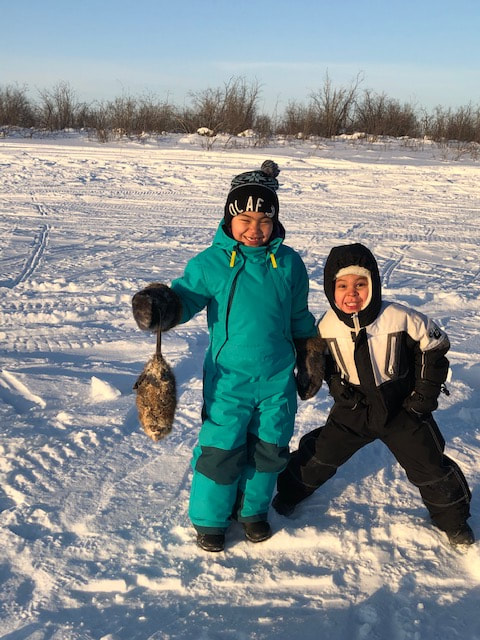
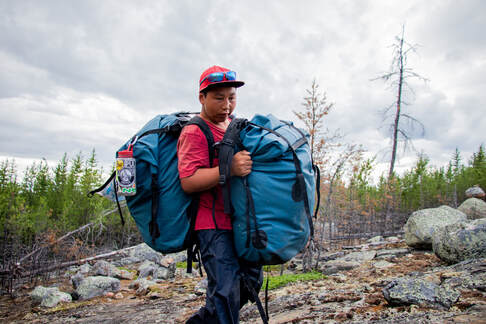
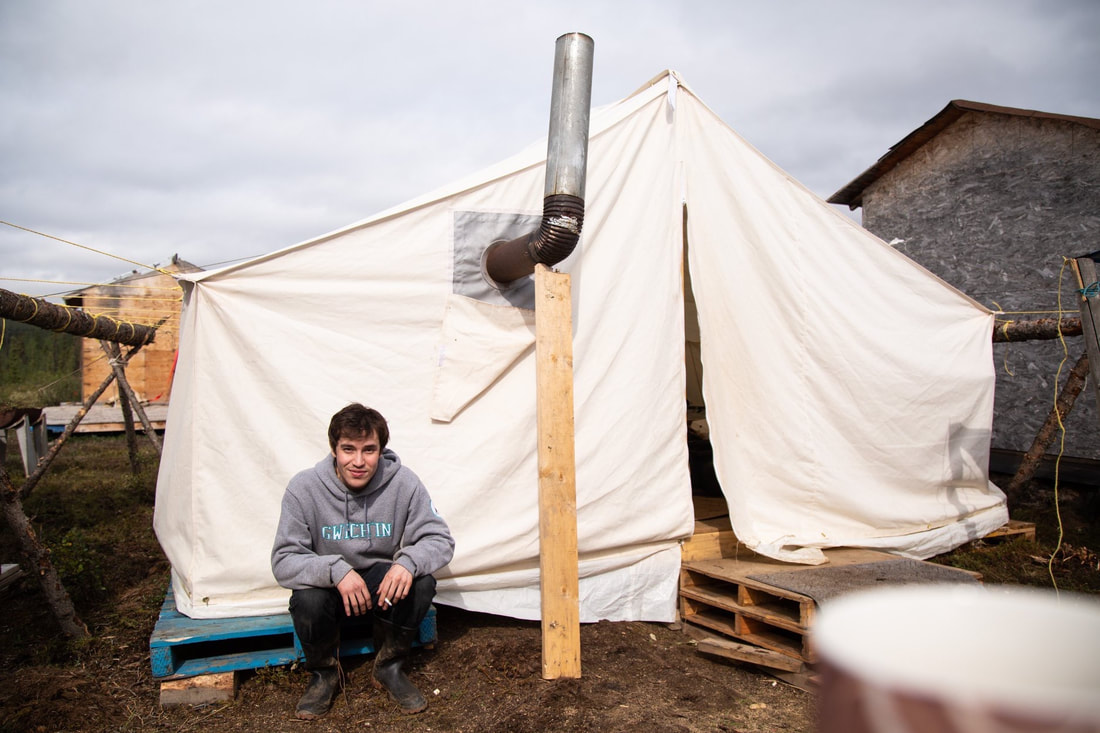
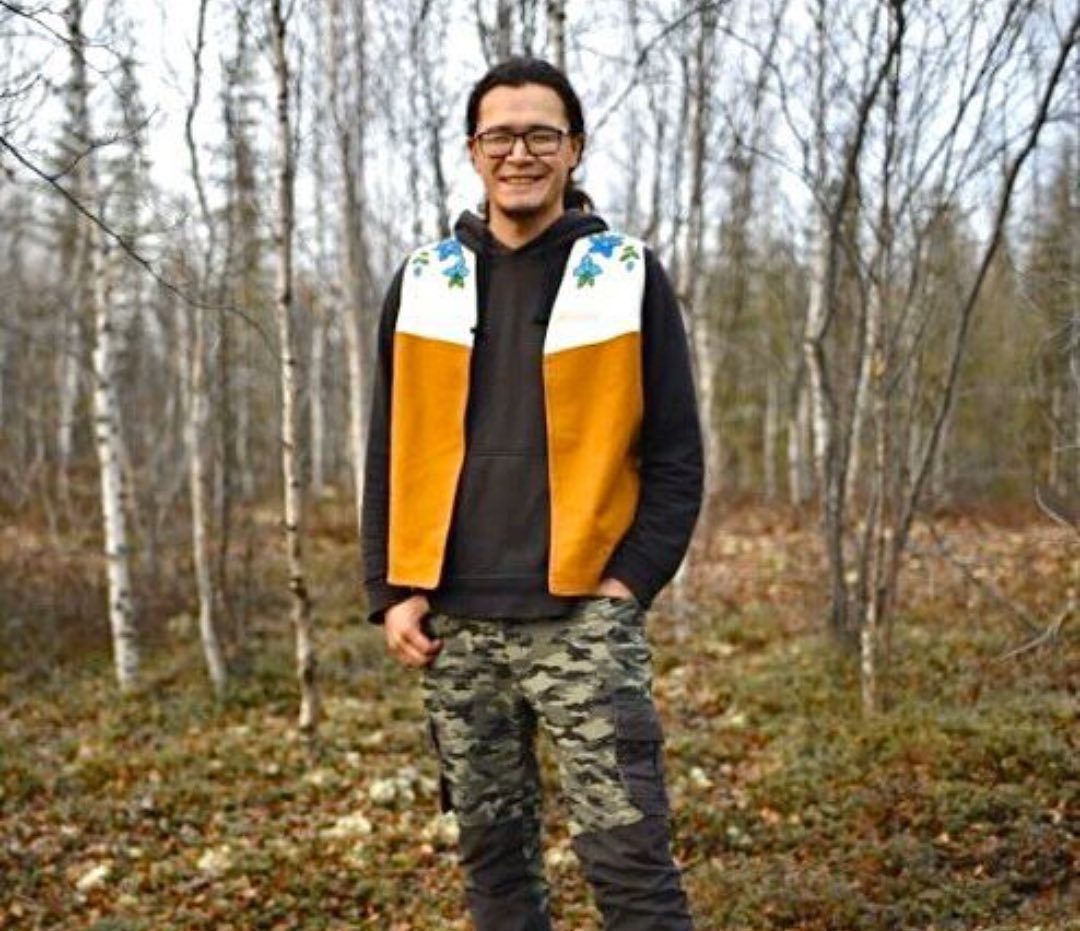
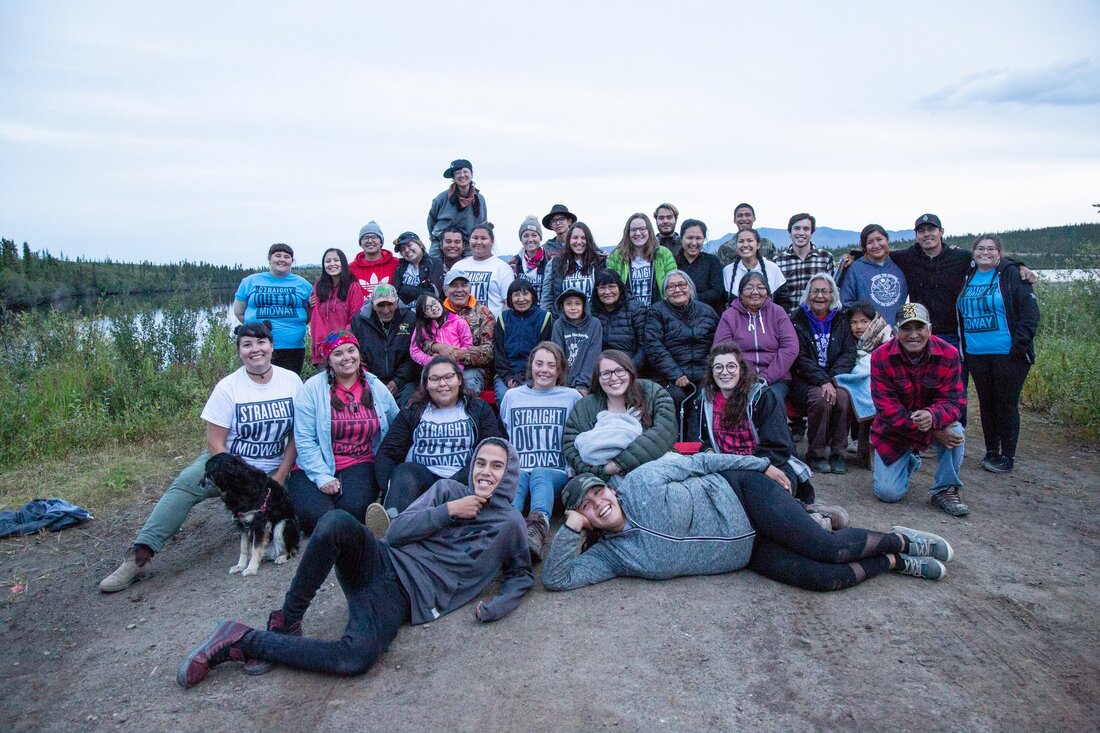
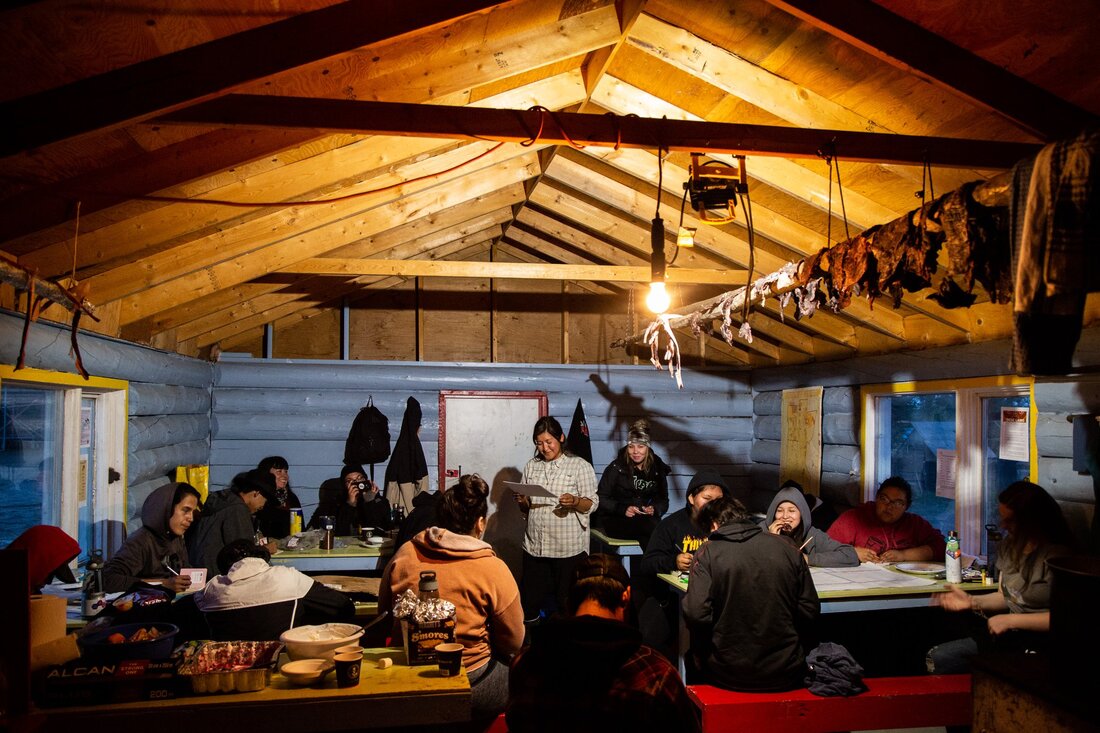
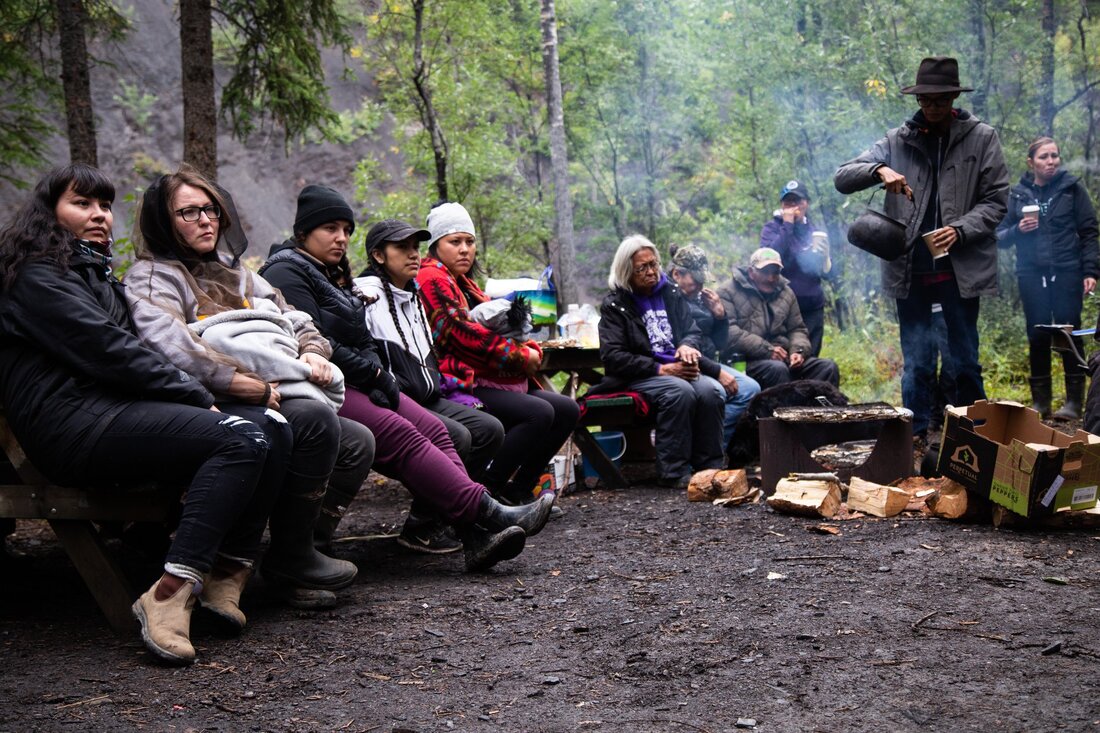
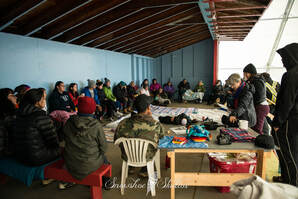
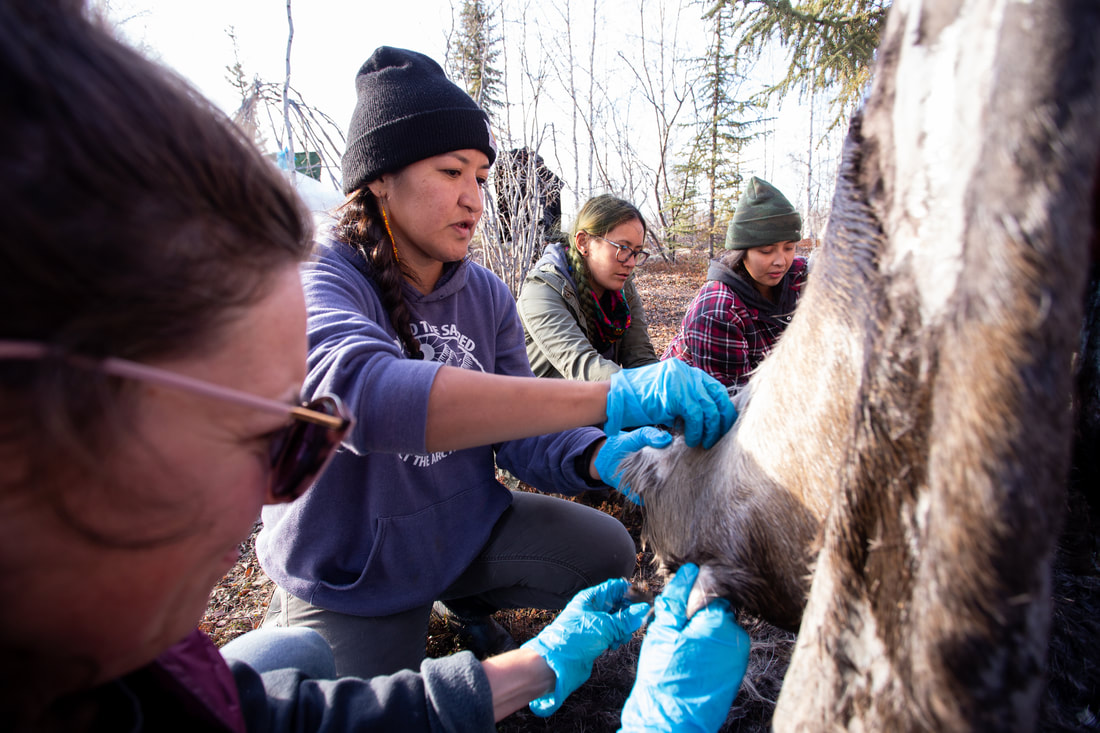
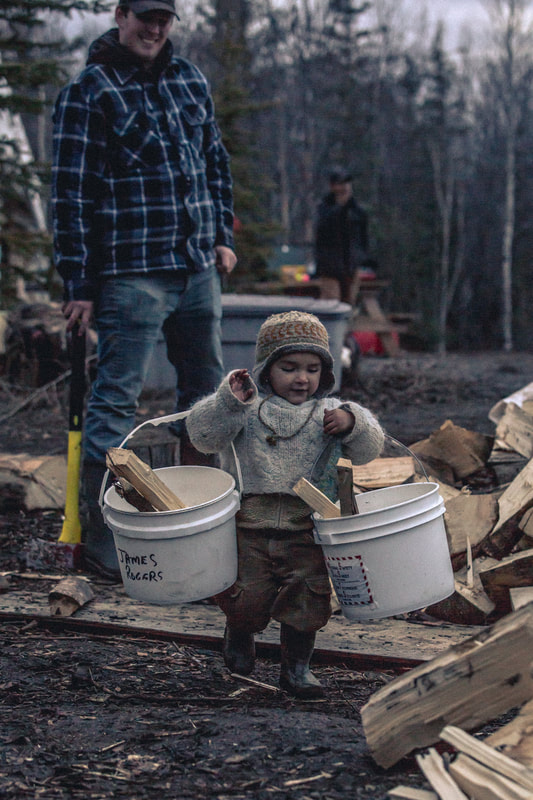
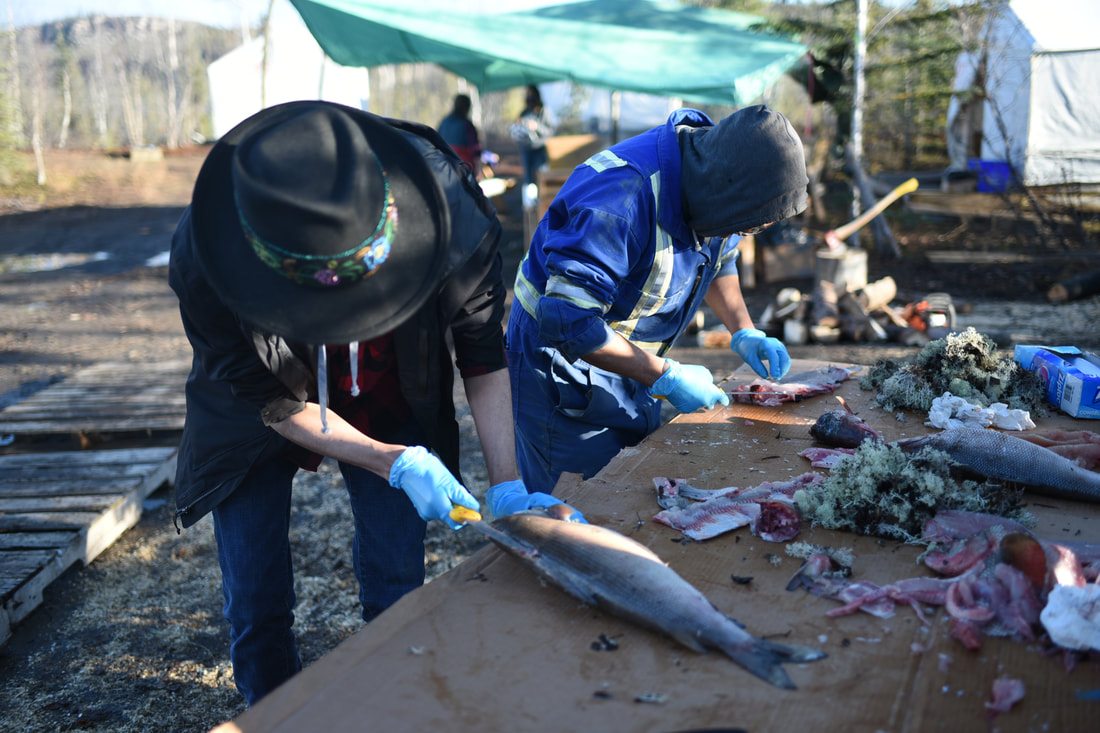
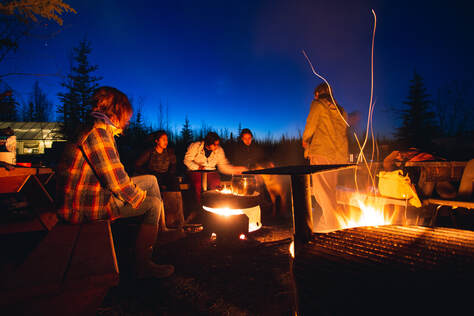
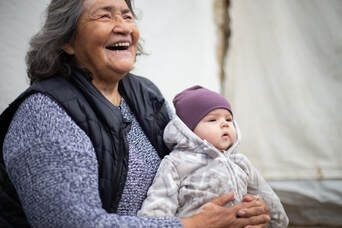
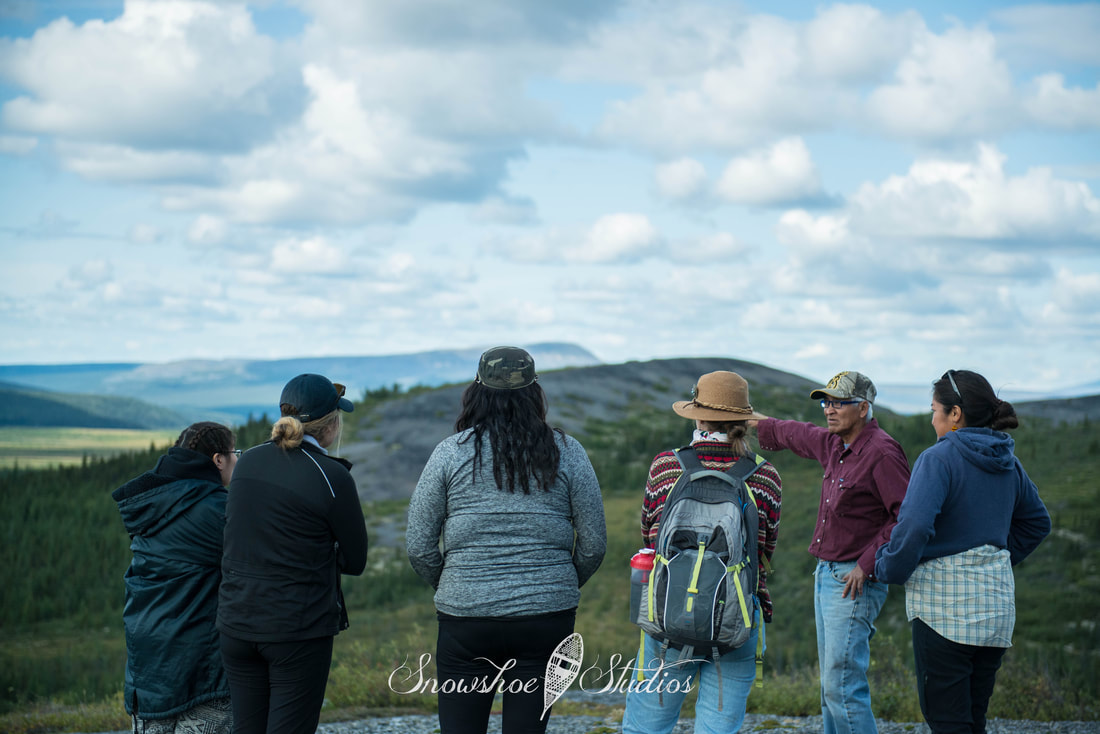
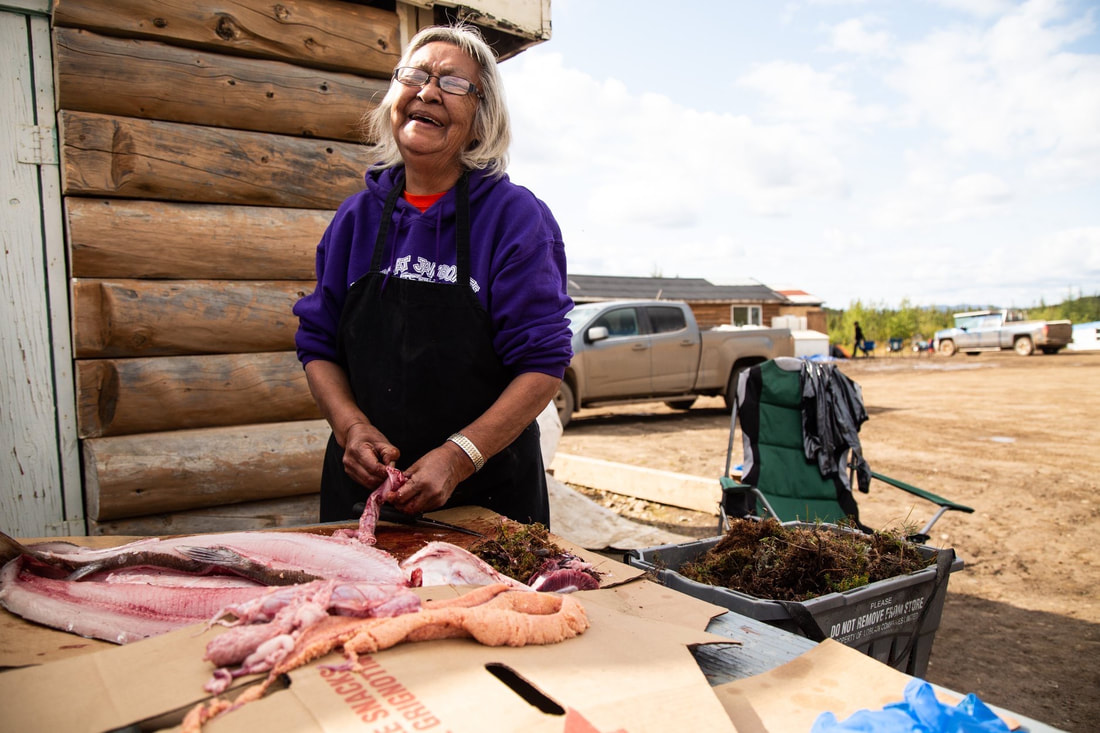
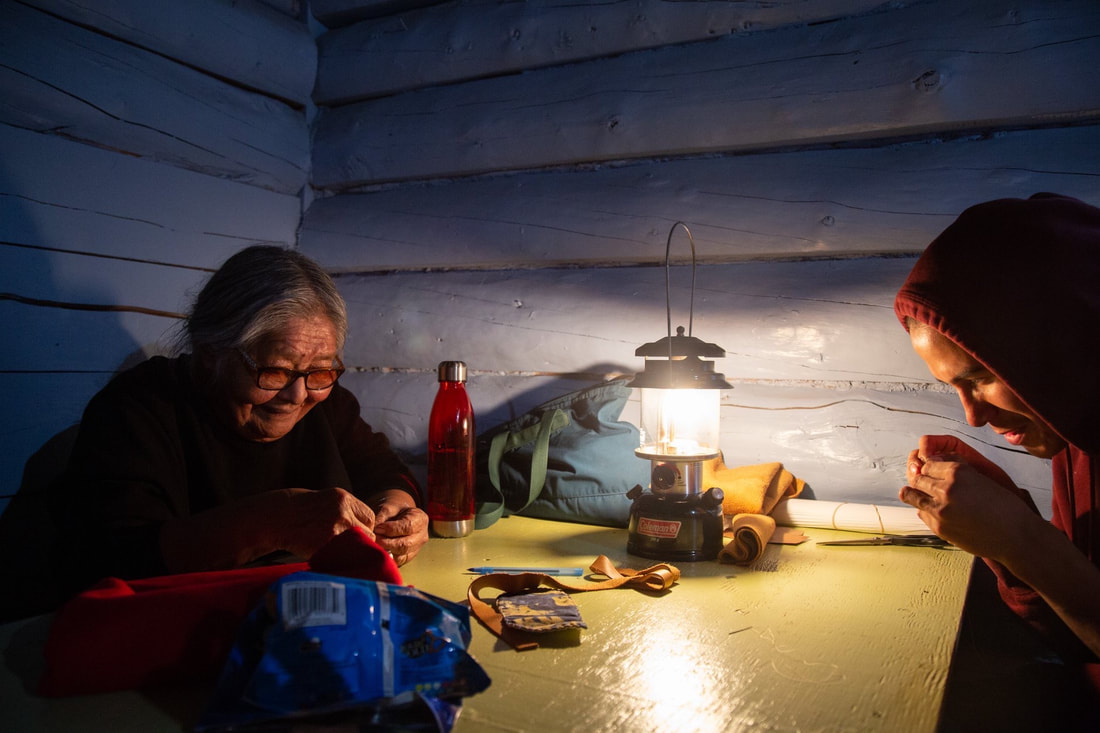
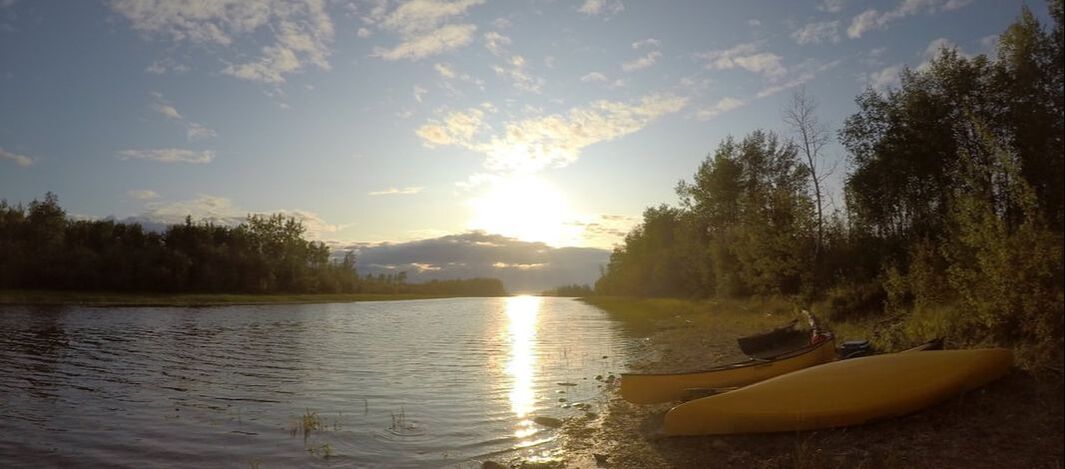
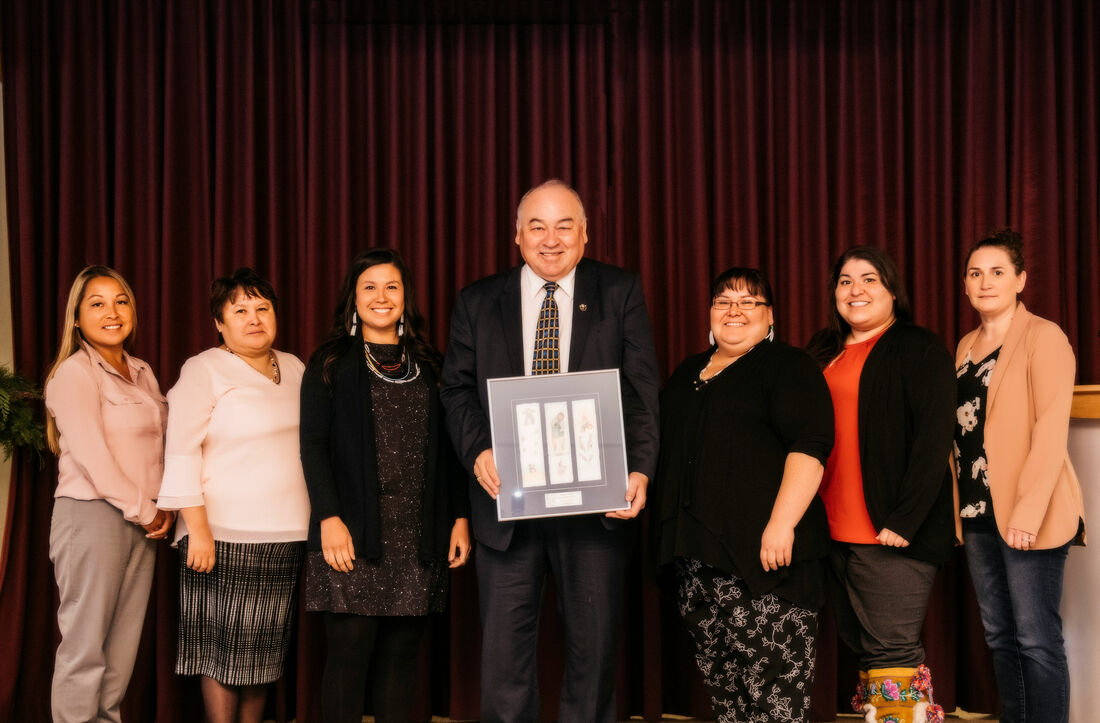
 RSS Feed
RSS Feed